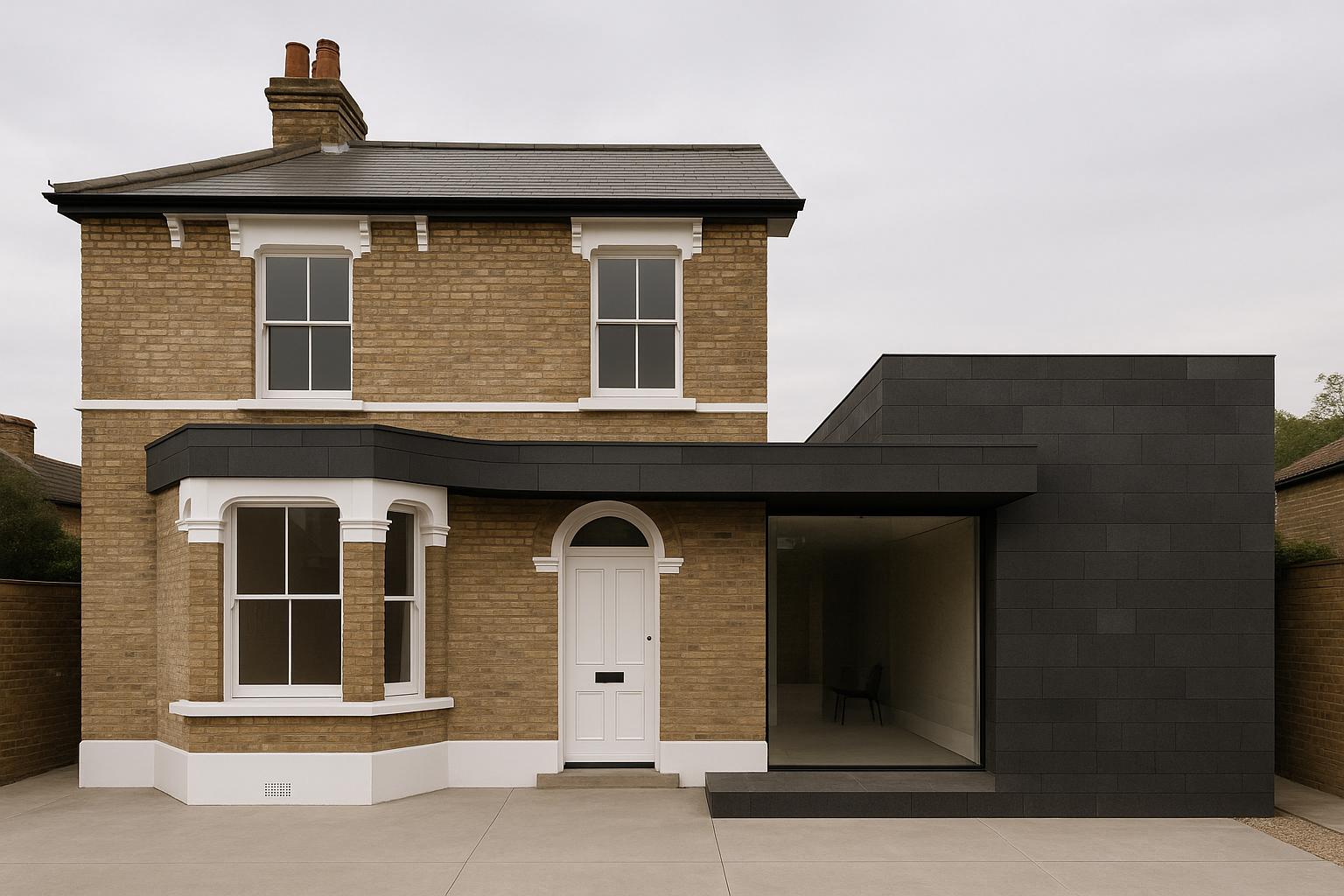Basalt House is a striking example of how materiality and minimalist design can transform a Victorian terrace in north west London into a thoughtfully extended family home. Designed by local architecture studio EBBA, the project involved both a rear and a loft extension that reconfigure circulation and usher more daylight into the property's traditionally deep and narrow layout. By employing raw blocks of grey basalt stone, the architects bring a tactile, grounded quality to the home’s contemporary interventions, successfully balancing respect for historical architecture with modern living needs.
EBBA’s approach to Basalt House reflects an ethos of "doing more with less," focusing on subtle yet meaningful architectural gestures to enhance flow, light, and texture. The loft extension adds two bedrooms and features a circular skylight that channels natural light down through the stairwell, brightening the central areas on the lower floors. At the rear, the new kitchen area is topped by a long, sloping skylight and opens fully to the garden via a sliding glass door. These extensions introduce two clear visual and physical axes through the home—from the front door and adjacent living room to the garden—creating a welcoming spatial sequence that strengthens connections between interior and exterior.
The choice of basalt as a predominant material is particularly noteworthy. EBBA highlights the stone’s lower embodied carbon compared to traditional building materials, aligning with modern sustainability goals. The basalt blocks are left exposed on the rear facade, complemented by a large white steel lintel above the sliding door, which visually reinforces the structure’s weight and solidity. Inside, the material palette includes white walls and custom-built storage, a dark-stained ash kitchen island, and grey valchromat countertops, all resting on polished concrete floors that contrast yet harmonise with the original timber floorboards. These elements underscore the studio’s careful attention to tactile richness and environmental performance while bridging old and new architectural narratives.
According to EBBA, Basalt House exemplifies their philosophy of material-led transformations that uplift everyday living while honoring the home’s historical context and construction methods. This design sensitivity is echoed in previous projects by the studio, such as another Victorian extension in Camden where white-painted steel frames blend old and new, and a project in East London combining brutalist inspirations with classic villa details. Across these works, including Basalt House, EBBA consistently integrates sustainable, natural materials and precise craftsmanship—qualities that contribute to a calm, cohesive atmosphere and enhance the holistic experience of the home.
Photographer Rikard Kahn’s imagery captures the expressive texture of the basalt stone and the warm, sophisticated interiors, visually narrating the success of EBBA’s interventions. By reviving a Victorian home with bold yet harmonious contemporary architecture, Basalt House illustrates how thoughtful design can enrich both the materiality and lived experience of a heritage property, setting a compelling example for future residential renovations.
📌 Reference Map:
- Paragraph 1 – [1], [2], [3]
- Paragraph 2 – [1], [2], [3]
- Paragraph 3 – [1], [2], [3]
- Paragraph 4 – [1], [3], [4], [6]
- Paragraph 5 – [1]
Source: Noah Wire Services
